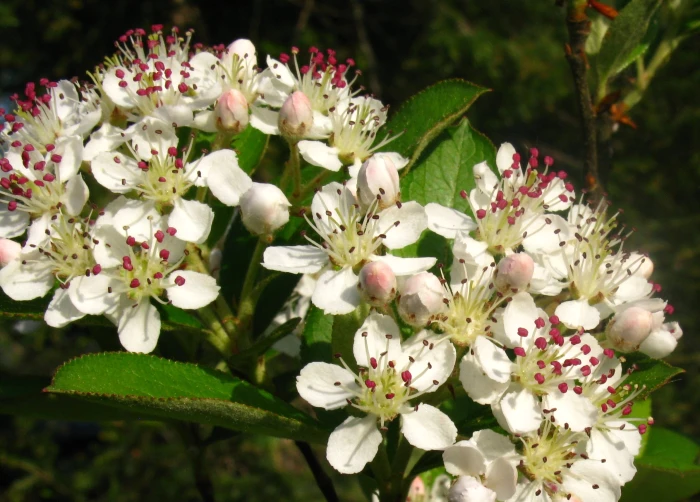Red Chokeberry
(Aronia arbutifolia)
Red Chokeberry (Aronia arbutifolia)
/
/

Bob Gutowski
CC BY 2.0
Image By:
Bob Gutowski
Recorded By:
Copyright:
CC BY 2.0
Copyright Notice:
Photo by: Bob Gutowski | License Type: CC BY 2.0 | License URL: https://creativecommons.org/licenses/by/2.0 | Uploader: Flickr upload bot | Publisher: Wikimedia Commons | Title: Aronia_arbutifolia2475275707.jpg | Notes: User created page with UploadWizard |






































































Estimated Native Range
Climate Requirements for Hannover, Germany
| This Plant | Your Site | Plant Suitability for Your Location | ||
|---|---|---|---|---|
| • Precipitation | 14" - 110" | 26" | Your precipitation may be insufficient for this plant. Irrigate N" / year. | Irrigate N" / year |
| • High Temp. | 57°F - 94°F | 75°F | Your summer temperatures are normal for this plant. | Excellent |
| • Low Temp. | -15°F - 51°F | 30°F | Your winter temperatures are normal for this plant | Excellent |
This plant should grow well at your location with about N inches per year (Y minutes per month) of irrigation.
Summary
Aronia arbutifolia, commonly known as Red Chokeberry, is a semi-deciduous shrub native to wetlands, bogs, and moist forests in eastern North America. This plant typically grows 6 to 10 feet tall and 3 to 5 feet wide, with a rounded, upright habit. It features clusters of white to light pink flowers in the spring, which give way to clusters of glossy red berries that persist into winter, providing visual interest and food for birds. The foliage turns a striking red or purple in the fall, adding to its ornamental value.
Red Chokeberry is valued for its multi-season interest, including its showy fruits, fall coloration, and the ability to thrive in wet conditions where other plants might struggle. It is used in rain gardens, as a border shrub, or for naturalizing in moist areas. It prefers acidic, well-drained soils but is adaptable to various conditions, including occasional dry spells once established. While it can tolerate part shade, fruit production and fall color are best in full sun. It is generally pest and disease resistant but can suffer from fungal leaf spots in humid conditions.CC BY-SA 4.0
Red Chokeberry is valued for its multi-season interest, including its showy fruits, fall coloration, and the ability to thrive in wet conditions where other plants might struggle. It is used in rain gardens, as a border shrub, or for naturalizing in moist areas. It prefers acidic, well-drained soils but is adaptable to various conditions, including occasional dry spells once established. While it can tolerate part shade, fruit production and fall color are best in full sun. It is generally pest and disease resistant but can suffer from fungal leaf spots in humid conditions.CC BY-SA 4.0
Plant Description
- Plant Type: Shrub
- Height: 6-10 feet
- Width: 3-6 feet
- Growth Rate: Moderate
- Flower Color: White
- Flowering Season: Spring
- Leaf Retention: Semi-Deciduous
Growth Requirements
- Sun: Full Sun, Part Shade
- Water: Medium
- Drainage: Slow, Medium, Fast
Common Uses
Bee Garden, Bird Garden, Border Plant, Butterfly Garden, Deer Resistant, Erosion Control, Fire Resistant, Fragrant, Low Maintenance, Showy Flowers, Street Planting, Water Garden
Natural Habitat
Wetlands, bogs, and moist forests
Other Names
Common Names: Filzige Apfelbeere, Aronia À Feuilles D’Arbousier, Aronie À Feuilles D’Arbousier, Rode Appelbes, Röd Aronia, Rödaronia
Scientific Names: Aronia arbutifolia, Aronia arbutifolia var. brilliantissima, Photinia pyrifolia, Aronia melanocarpa var. grandifolia, Pyrus arbutifolia, Sorbus arbutifolia, Crataegus pyrifolia, Aronia arbutifolia f. leiocalyx, Mespilus arbutifolia
GBIF Accepted Name: Aronia arbutifolia (L.) Pers.